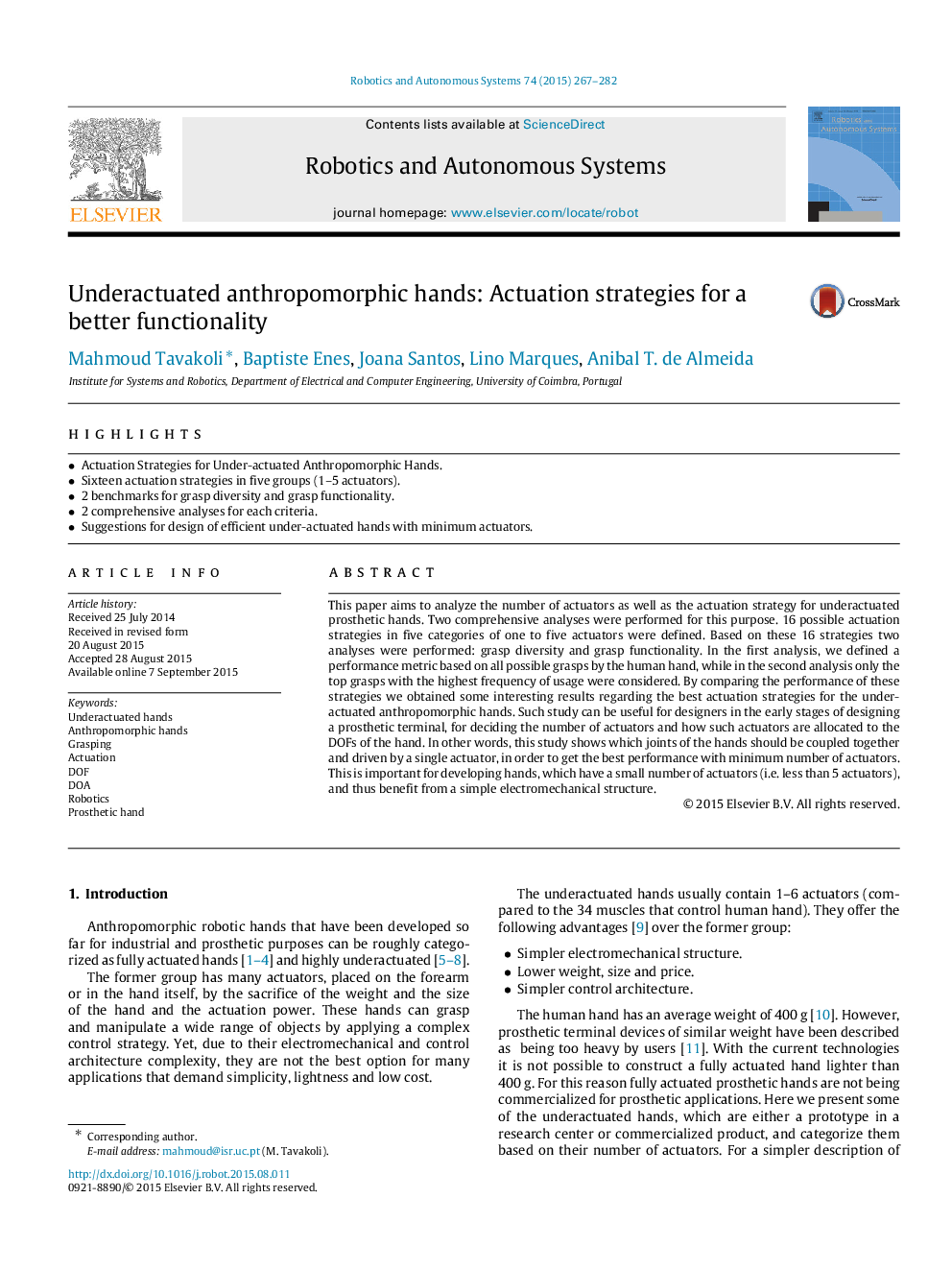| Article ID | Journal | Published Year | Pages | File Type |
|---|---|---|---|---|
| 10326946 | Robotics and Autonomous Systems | 2015 | 16 Pages |
Abstract
This paper aims to analyze the number of actuators as well as the actuation strategy for underactuated prosthetic hands. Two comprehensive analyses were performed for this purpose. 16 possible actuation strategies in five categories of one to five actuators were defined. Based on these 16 strategies two analyses were performed: grasp diversity and grasp functionality. In the first analysis, we defined a performance metric based on all possible grasps by the human hand, while in the second analysis only the top grasps with the highest frequency of usage were considered. By comparing the performance of these strategies we obtained some interesting results regarding the best actuation strategies for the under-actuated anthropomorphic hands. Such study can be useful for designers in the early stages of designing a prosthetic terminal, for deciding the number of actuators and how such actuators are allocated to the DOFs of the hand. In other words, this study shows which joints of the hands should be coupled together and driven by a single actuator, in order to get the best performance with minimum number of actuators. This is important for developing hands, which have a small number of actuators (i.e. less than 5 actuators), and thus benefit from a simple electromechanical structure.
Related Topics
Physical Sciences and Engineering
Computer Science
Artificial Intelligence
Authors
Mahmoud Tavakoli, Baptiste Enes, Joana Santos, Lino Marques, Anibal T. de Almeida,
